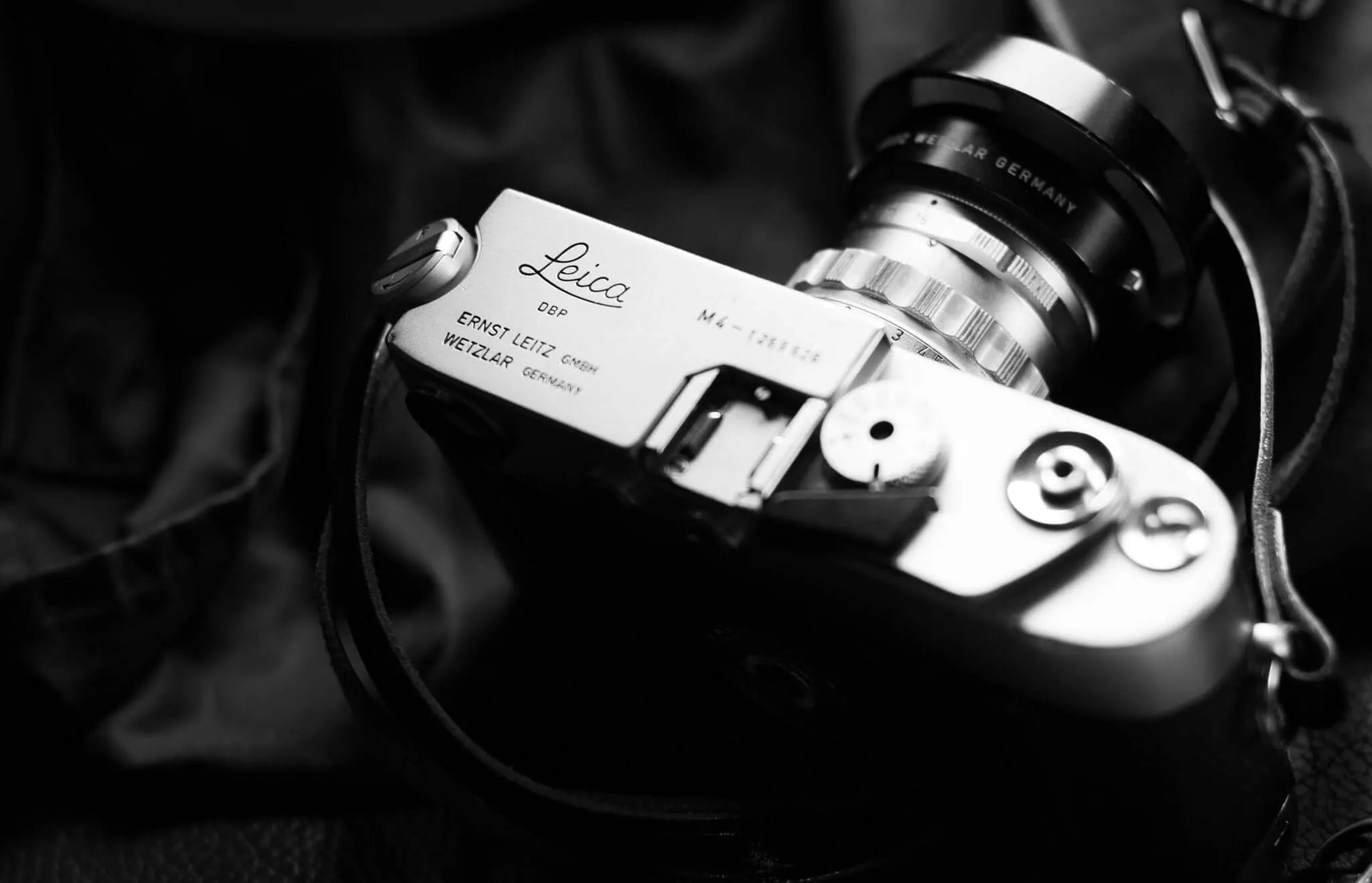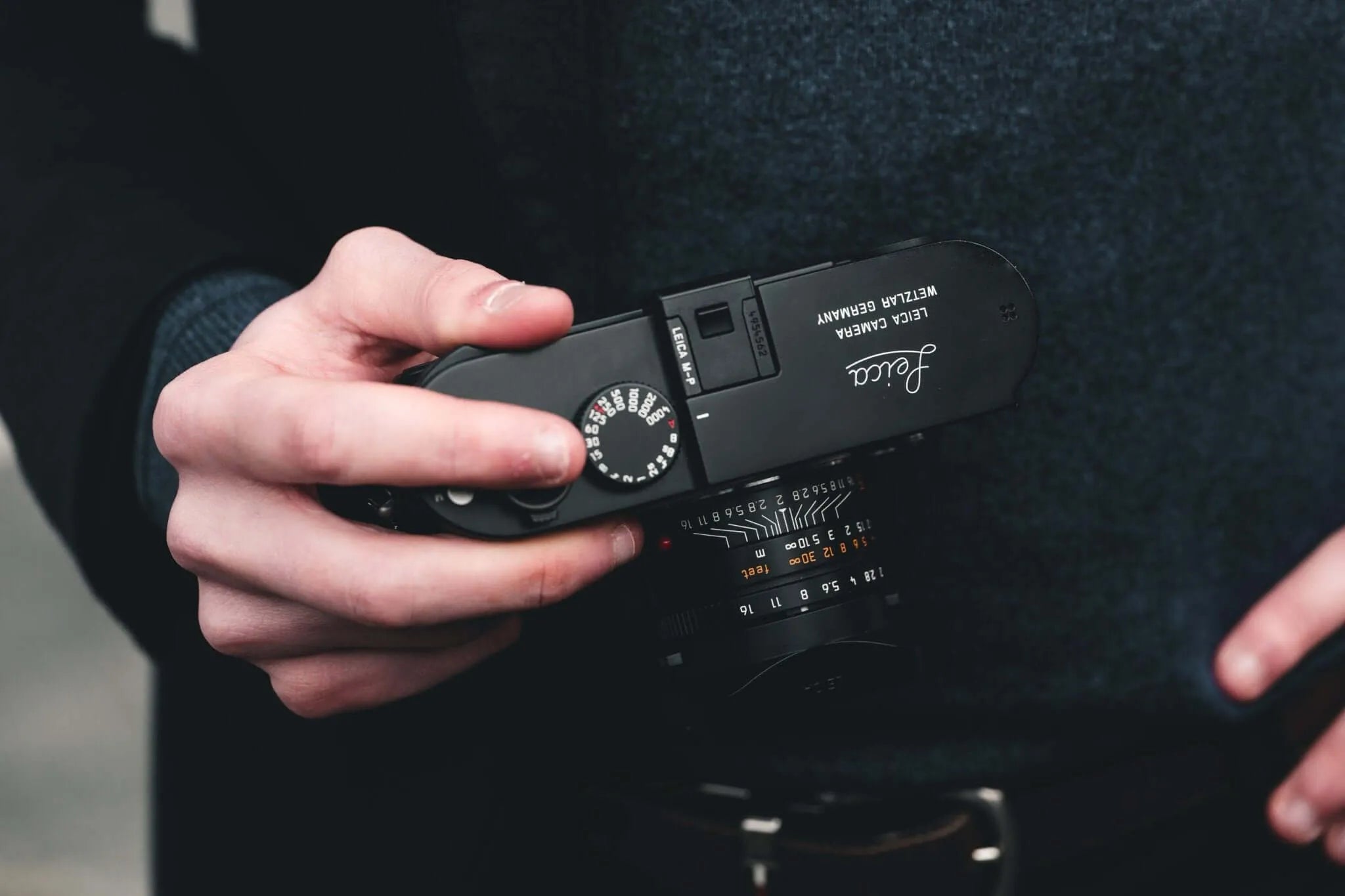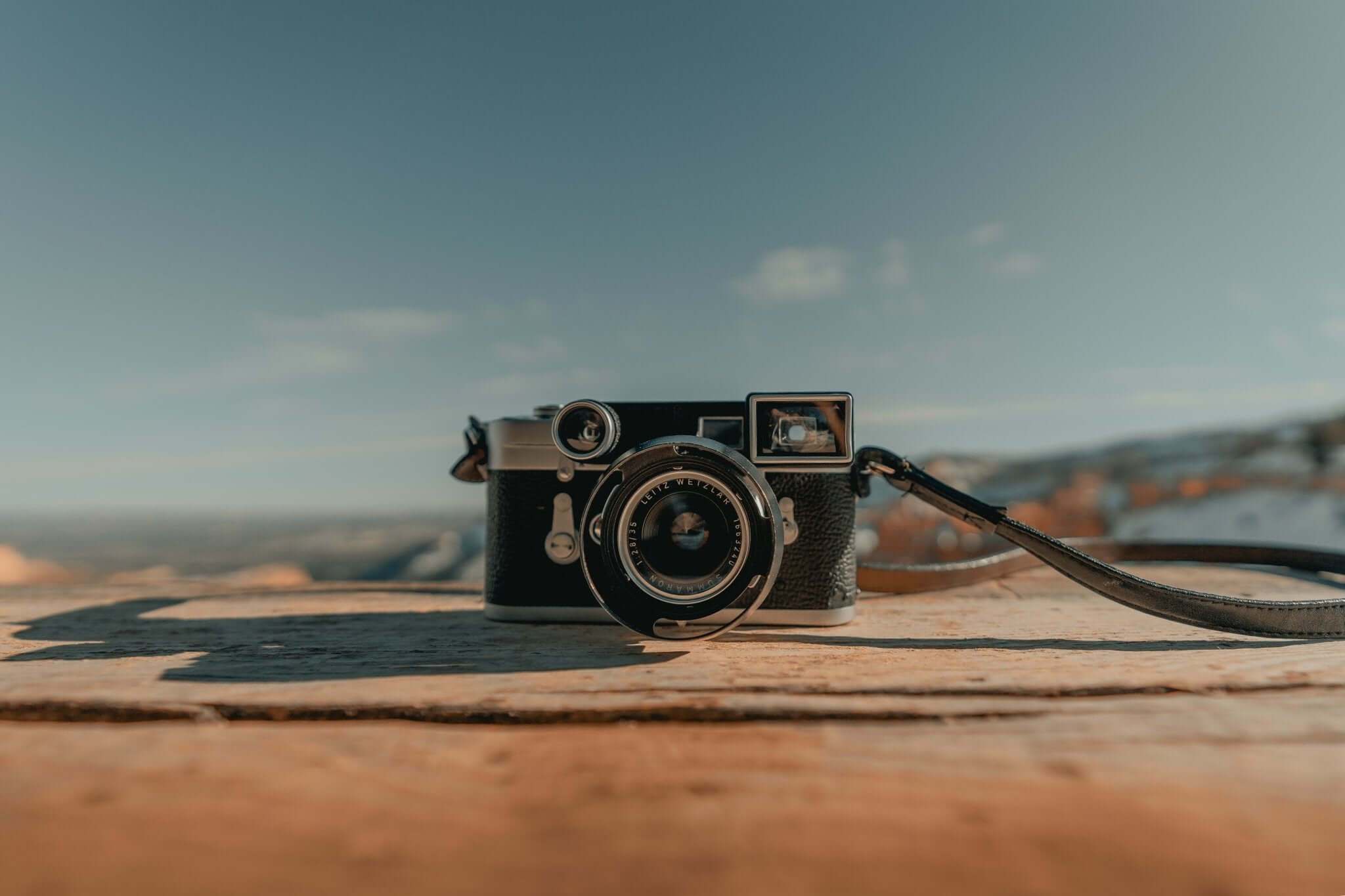
How exactly does the rangefinder work on the Leica?
The viewfinder of a camera is a photographer's window to the world. With the Leica, the rangefinder can be used to control the image section, its composition and its depth of field. It is therefore an important component that we want to write about in detail here.
Rangefinder functionality Leica
The fact that the rangefinder is a central part of the Leica M is even reflected in its name, as this is exactly what the extra letter stands for. At the time of its market launch, the Leica M was one of the first rangefinder cameras, and today it is one of the few that are still selling well. Basically, not much has changed in the construction and function of the Leica rangefinder since the first Leica M in the 1950s.
Mechanically speaking, the rangefinder is a compact component that is connected to the lens by a small lever inside the camera. Here, the distance to the object is measured through the viewfinder, not through the lens as with an SLR camera. In combination with an appropriate lens, the rangefinder, also known as a rangefinder enables manual focusing with millimeter precision.
You can also find the right camera bag for your equipment and everything you need to protect your camera in our Oberwerth Shop. From classic camera bags modern sling bags to elegant photo weekenders and backpacks. Of course you will also find hand straps and shoulder straps here. Finest craftsmanship made from the best materials. Take a look around and find the bags & accessories that best suit you and your equipment!
In detail, the rangefinder consists of two viewfinder windows whose respective images are superimposed by a mirror system in the camera's viewfinder eyepiece. The resulting image is in turn linked to the distance setting of the camera. In order to focus, both images must lie congruently on top of each other, which is achieved by turning the focus ring on the lens.
Advantages of the rangefinder
From a technical point of view, the biggest difference between a rangefinder camera and the very popular SLR cameras is that the distance to the subject is measured through the viewfinder and not through the lens as with SLR cameras. This means that the measuring accuracy of these cameras is much higher than that of an SLR, especially at short focal lengths.
Another important advantage of cameras equipped with a rangefinder is that they can handle the available light particularly well, which is also known as available light is also known as available light. The bright and high-contrast viewfinders of the Leica allow sharp, well-composed photos even in difficult lighting conditions. Particularly low-light lenses on SLR cameras darken the viewfinder considerably. This means that the Leica can also do without a flash in situations where you would be standing in the dark with an SLR camera without artificial lighting.
And the rangefinder also makes a real difference to the feel of the camera. Photographers appreciate that the rangefinder system makes the Leica M easy and intuitive to use after an initial learning phase. They can concentrate on the central focus - their image - and transform their very own subjective image idea into a photo.
The various illuminated frames that can be displayed, which show the field of view of the respective lens, make it easy to observe the surroundings while taking pictures. Even when The view of the subject is maintained even when the shutter is released, which offers additional freedom and more spontaneous reaction options to the action. Not least because of its rangefinder, the Leica M has been one of the most popular cameras in the field of street photography for decades, where a high degree of spontaneity and quick reactions are required.
Closer, faster, better?
The rangefinder of the Leica M brings with it some special features in the behavior of photographers working with the camera. For example, they have to get much closer to the subject, as shots taken from a long distance are more difficult due to the the smaller image section in the rangefinder is difficult to compose and focus. This creates a different interaction between the photographer and his subject, he becomes part of the scene he is documenting and does not remain an observer.
This different way of photographing with the Leica M requires practice and unsuccessful attempts have already deterred some photography enthusiasts from experimenting with a rangefinder camera. If you want to see exactly what the photo will
what the photo will actually look like, a modern digital camera may be a better option. Here, an electronic viewfinder is used to simulate the exact exposure of the photo.
Problems with the rangefinder
Despite its many advantages and staunch advocates, a rangefinder camera like the Leica is of course not always the best choice in every situation. Manual focusing, for example, is difficult when you or the subject you are photographing are moving quickly. To work without autofocus, you need a moment to focus before taking the photo. Moving objects often simply do not allow enough time to react. Photographing with a rangefinder camera can also be a headache in the telephoto range, because if the subject is too far away, precise focusing is simply too difficult at some point. At longer focal lengths, the part of the viewfinder that displays the actual image can become very small, which makes precise focusing difficult. However, a viewfinder magnifier, which is offered by manufacturers as an accessory and makes focusing easier, can help.
Another problem with rangefinder cameras is the so-called "parallax effect". As the image is not seen directly through the lens and it is at a small distance from the optics, there is a shift from the viewfinder image to the subsequent photo. The parallax effect is most noticeable in close-up shots. In addition, the rangefinder can shift slightly, which results in blurring of distant subjects. This error can be readjusted at home, for which numerous videos on the Internet provide instructions. However, this type of adjustment involves millimeter work that requires not only expertise but also a fine touch and can be left to the experts. At the Leica factory, for example, problems with the rangefinder can be professionally rectified.
Register now for our newsletter and receive regular updates on our updates on our blogs, products and offers! After successful registration you will also receive a 10% voucher for the Oberwerth Online Shop!

